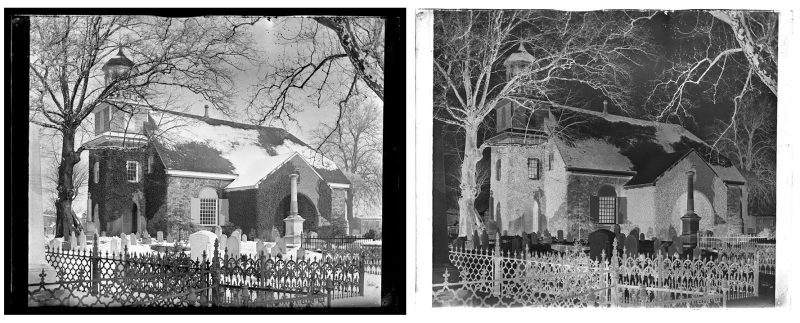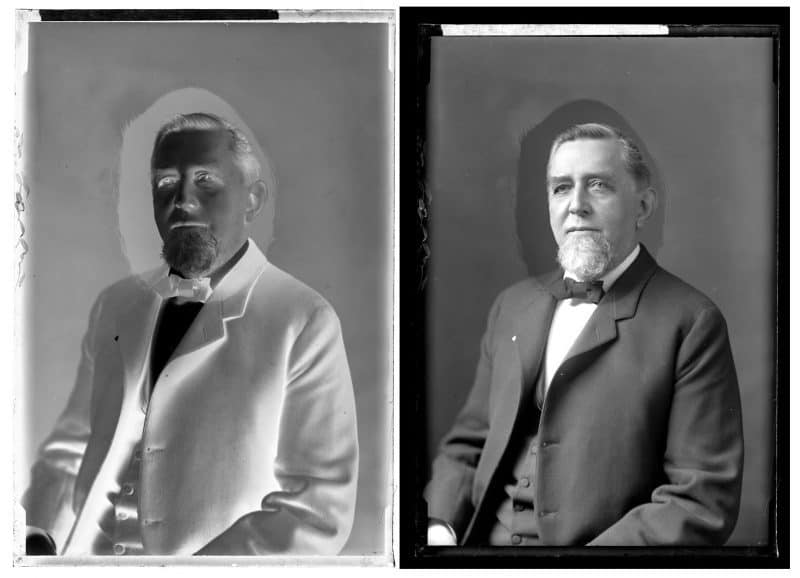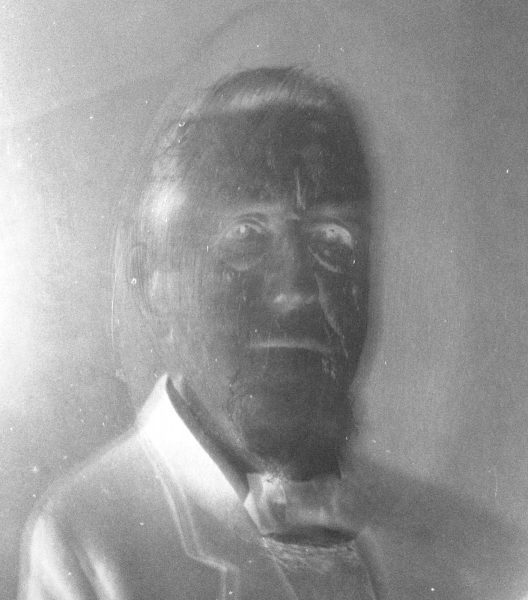Negative/Positive

Marriott C. Morris, Old Swede’s Church Wilmington. From 6th St. Snow on Ground. 1883.

Marriott C. Morris, Elliston P. Morris, ca. 1890.
The negatives of people are especially arresting, their faces emerging like ghosts from the lightbox. While haunting, these negatives hide details about the sitter that only emerge when the positive image is created. Marriott C. Morris’ father Elliston P. Morris’ kind eyes are obscured in the negative version of his portrait but gaze out warmly from the positive image.

Marriott C. Morris, detail on negative of Elliston P. Morris, ca. 1890.
1314 Locust St., Philadelphia, PA 19107
TEL 215-546-3181 FAX 215-546-5167
http://www.librarycompany.org

Leave a Reply
Want to join the discussion?Feel free to contribute!